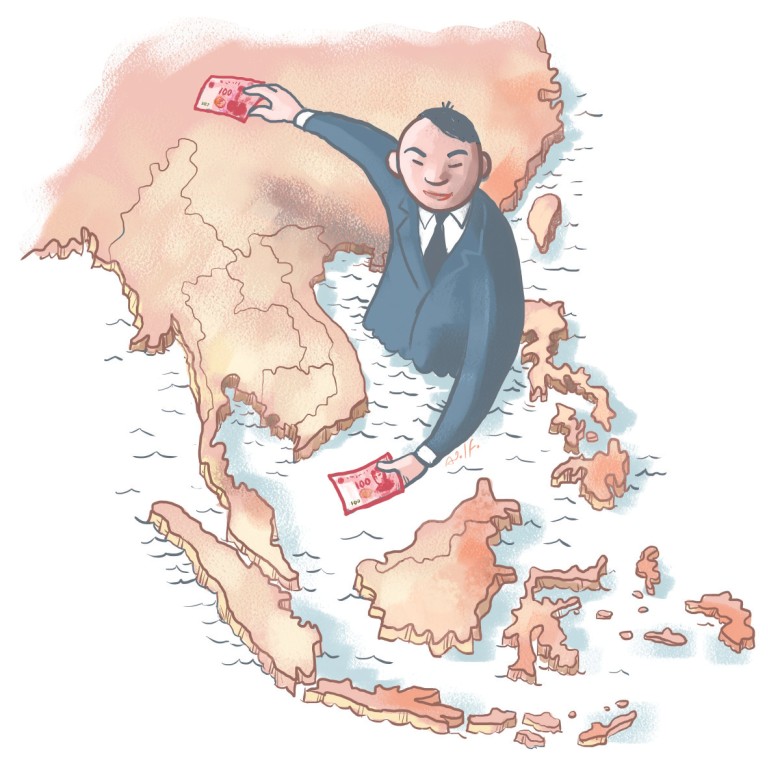
Overseas Chinese business can build bridges for the new maritime silk road
He Yafei says overseas Chinese businesses, with their knowledge of local conditions, can play a critical role in China's push for a new maritime silk road to deepen regional economic relations
This year, China will begin building a new maritime silk road to revive a route that historically contributed to its flourishing economic ties with neighbours in Southeast Asia and beyond.
Indeed, Southeast Asia is an integral part of this ancient maritime route that originated in Quanzhou , in what is now Fujian province .
History is a mirror. The fastest growth of bilateral trade and investment for China in the past decade has been with the Association of Southeast Asian Nations, with total trade reaching US$400 billion in 2012, a five-fold increase in 10 years, and two-way investments exceeding US$100 billion, a three-fold increase in the same period.
The target for the China-Asean free trade agreement is US$1 trillion in bilateral trade and an additional US$150 billion in two-way investments by 2020.
Financial co-operation, currency swaps, the creation of an infrastructure bank and increased connectivity are all expected to come within the bounds of the agreement. The maritime silk road will inject new meaning and life into the expansion of economic ties between China and Asean members in the years to come.
Large numbers of Chinese - estimates put the figure at 30 million or more - have migrated to Southeast Asia, for historical and geographic reasons. And they are well-off. A 2009 report put the total global assets of overseas Chinese businesses at around US$3.9 trillion, of which up to US$1.2 trillion is in the hands of overseas Chinese in Southeast Asia. About a third of the top 500 global overseas Chinese companies can be found in Asean countries. Moreover, 70 per cent of the companies listed on Southeast Asian stock markets are overseas-Chinese owned.
Overseas Chinese have been residing abroad for centuries. They are the "natural bridge" connecting China with other countries, given their advantage of knowledge of local politics, economics and culture that can prove useful in exchanges. For example, since China's opening up in the late 1970s, more than 60 per cent of foreign direct investment into China has come from overseas Chinese, including those in Hong Kong, Macau and Taiwan.
Overseas Chinese can play a vital role in helping to build the new maritime silk road, not least by acting as a "lubricant" to help move the excess capacity of China's manufacturing industry into Asean countries, to build infrastructure and manufacturing capacity there. Assimilating China's excesses in iron and steel, cement, flat-panel glass, aluminium and ship-building will benefit all and become an essential part of local industry.
Many large businesses owned by overseas Chinese in Southeast Asia have extensive business networks, in addition to their capital and technology, which can be of great assistance to Chinese companies seeking to implement the "going out" strategy.
Since 2011, Indonesia, Thailand and other Asean nations have made clear their plans for long-term investment in infrastructure, estimated at US$1.5 trillion between 2011 and 2020. It is possible and desirable for Chinese companies to invest, with overseas Chinese business, in the construction of ports, railways and highways, as well as the energy sector.
Moreover, Asean is China's biggest overseas contract construction market with returns of US$16.6 billion for 2011. Singapore and Brunei aside, Asean members are still in the process of industrialisation and urbanisation. This opens up huge opportunities for mainland and overseas Chinese companies to co-operate in contract construction projects.
There are very real opportunities in Southeast Asia for the renminbi to become the currency for trade settlement and financing as well as investment and eventually a reserve currency.
Since 2009, when a pilot project was launched, renminbi settlement of cross-border trade between China and Asean countries had reached 1.12 trillion yuan (HK$1.42 trillion) by the end of last June. Currency swap agreements to date total 1.4 trillion yuan. Clearly, the potential is huge.
Overseas Chinese business not only occupy a critical position in the economies of Asean countries, but have also invested heavily in China. They are part and parcel of the booming trade between China and Asean members like Singapore, Indonesia, Malaysia, Thailand and the Philippines.
The move towards renminbi regionalisation would be boosted if Beijing were to offer overseas Chinese businesses preferential policies, such as allowing overseas Chinese banks to open, to bring their role as "bridges" or "lubricants" into full play.
A new maritime silk road also needs intellectual support and new ideas, which can be gleaned from overseas Chinese think tanks and experts in Southeast Asia as well as from Hong Kong, Macau and Taiwan, with a wider perspective from other parts of the world, too.
These are China's treasure boxes in which one can find "ideal solutions to almost all issues", as described in the ancient Chinese novel, .
The Boao Forum for Asia in April will look at ways to develop Asian economic co-operation. One session will be devoted to the maritime silk road and overseas Chinese businesses in Southeast Asia. Much hope has been pinned on its outcome.
Building a maritime silk road with China's neighbours is one of President Xi Jinping's major initiatives. The proposal has been widely hailed in the region as something that will benefit all.
The Chinese economy is well on its way to sustained, moderate growth and the economic prospects for Asean appear equally bright. The role that the overseas Chinese business community can play in this endeavour cannot be overstated.
